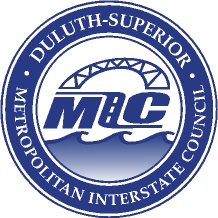Updating the 25-year Vision for Transportation in the Twin Ports
You are invited to attend one of the four public meetings on Connections 2040 – the Twin Ports Long Range Transportation Plan.
The Duluth-Superior Metropolitan Interstate Council (MIC) is updating its Long Range Transportation Plan (LRTP) to provide policy guidance, goals and strategies for jurisdictions within the greater metropolitan area of Duluth, Minnesota and Superior, Wisconsin. It covers a twenty-five year planning horizon and is updated every four years.
The over-arching purpose of the LRTP is to provide a planning foundation for jurisdictions to work cooperatively to provide a well-maintained, integrated, accessible and multi-modal transportation system to safely and efficiently move people and freight for the next 25 years, within the constraints of funding the region can reasonably expect to receive.
The heart of the Plan is a listing of proposed federally-funded transportation projects, as well as transportation initiatives underway within the region, to be implemented from 2015-2040. You can view an interactive map of the projects here.
To learn more about demographic trends for this area, projections, transportation priorities and planned projects, you have three opportunities for input:
1. Attend a Public Meeting
Thurs. Sept 11, 2014
5:00-7:00pm
Community Action Duluth, 2424 W 5th Street, Duluth, MN 55806
Thurs. Sept 18, 2014
4:00-6:00pm
Superior Public Library, 1530 Tower Avenue, Superior, WI 54880
Thurs. Sept 25, 2014
4:00-6:00pm
Arrowhead Regional Development Commission (ARDC)
221 W First Street, Duluth, MN 55802
Mon. Sept 29, 2014
4:00-7:00pm (drop-in)
214 West Superior Street
221 W First Street, Duluth, MN 55802
2. Visit our Connections 2040 web page at www.dsmic.org/lrtp for more information about the plan and to view the interactive map of proposed projects. You can use the “layers” tab in the upper right corner to toggle on and off views of information about environmentally sensitive areas, low-income and minority populations, etc.
3. Contact MIC Senior Planner James Gittemeier by phone at (218) 529-7556 or by email at jgittemeier@ardc.org.










